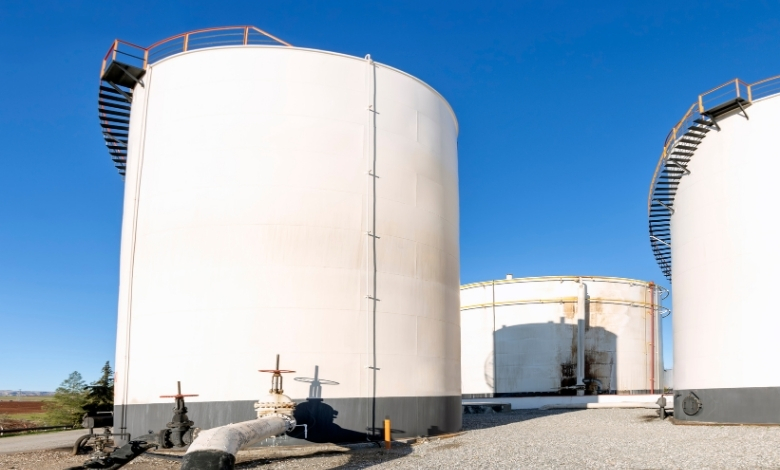Learn how API 653 Inspections for Floating Roof Tanks tackle unique challenges to ensure safety, compliance, and structural integrity.
When it comes to aboveground storage tanks, floating roof tanks are the cool kids on the block. Designed to minimize vapor loss and reduce the risk of flammable gas buildup, they’re the go-to for industries storing volatile liquids like crude oil and petrochemicals. But here’s the kicker: while floating roofs offer distinct advantages, they also come with their own set of unique inspection challenges.
That’s where API 653 inspection come into play. This industry-standard process ensures that floating roof tanks (FRTs) are structurally sound, safe, and compliant with regulations. But unlike fixed-roof tanks, FRTs bring some extra hurdles to the inspection process.
So, buckle up. We’re diving into the complexities of API 653 inspections for floating roof tanks, unpacking the quirks, the challenges, and how the pros handle them.
Article Breakdown
What Makes Floating Roof Tanks Special?
Before we get into the inspection nitty-gritty, let’s clarify what sets floating roof tanks apart. These tanks have a roof that literally floats on the surface of the stored liquid, rising and falling with the liquid level. There are two primary types:
- External Floating Roof Tanks (EFRTs): Open to the atmosphere, with a roof that floats on top of the liquid.
- Internal Floating Roof Tanks (IFRTs): Equipped with a fixed outer roof and a floating internal roof sitting on the liquid.
This design reduces vapor emissions, making them environmentally friendly and cost-effective. But it also means inspections aren’t as straightforward as with traditional fixed-roof tanks.
The API 653 Standard: A Quick Refresher
API 653 is the go-to standard for inspecting, repairing, altering, and reconstructing aboveground storage tanks. It covers everything from tank foundation and bottom to shell and roof integrity. For floating roof tanks, API 653 inspections focus on additional components like:
- Seal systems
- Floating roof pontoons
- Drain systems
- Deck plates and support legs
Now, let’s talk about what makes inspecting these tanks uniquely challenging.
1. Seal System Complications
The Challenge:
Floating roof tanks rely on seal systems to prevent vapor emissions between the tank wall and the floating roof. Over time, seals can degrade due to weather exposure, chemical reactions, or mechanical stress. Detecting leaks, tears, or material fatigue isn’t always easy, especially in hard-to-reach areas.
How Inspectors Handle It:
- Visual Inspections: Using drones or scaffolding to get close-up views of the seal.
- Gap Measurements: Checking for excessive gaps that could allow vapor escape.
- Seal Integrity Testing: Using vapor detectors to identify potential leaks.
2. Corrosion in Hidden Spaces
The Challenge:
FRTs are prone to corrosion in areas where moisture, product residue, or debris can accumulate—think under the floating roof or around the seal system. The tank’s roof-to-shell interface is particularly vulnerable because it’s a trap for condensation.
How Inspectors Handle It:
- Ultrasonic Thickness Testing (UTT): To detect wall thinning even if the corrosion isn’t visible.
- Magnetic Flux Leakage (MFL): For identifying hidden corrosion in deck plates and support structures.
- Robotic Crawlers: Equipped with sensors to inspect areas that are tough to access manually.
3. Drainage System Failures
The Challenge:
Floating roofs have drainage systems designed to remove rainwater from the roof’s surface. If these drains fail, water accumulation can overload the roof, causing structural stress—or worse, sinking. Inspections must verify that drains are clear, functional, and free of leaks.
How Inspectors Handle It:
- Flow Tests: To ensure water moves through the system without blockages.
- Leak Detection: Using pressure tests to identify leaks in the drain piping.
- Visual Checks: For signs of corrosion or damage to the drain lines and fittings.
4. Pontoon Integrity Issues
The Challenge:
Many floating roofs rely on pontoons for buoyancy. A leak in a pontoon can cause uneven floating, tilting, or even partial sinking of the roof. Since pontoons are often sealed compartments, detecting internal leaks isn’t simple.
How Inspectors Handle It:
- Leak Testing: Filling pontoons with inert gas and monitoring for pressure drops.
- Ultrasonic Testing: To detect thinning or corrosion on the pontoon walls.
- Buoyancy Assessments: Observing the roof’s floatation during operation for signs of imbalance.
5. Tank Bottom Access Challenges
The Challenge:
Inspecting the tank bottom is critical for API 653 compliance, but floating roofs complicate access. The roof might need to be mechanically supported or even removed in some cases, which increases downtime and cost.
How Inspectors Handle It:
- Robotic Inspection Tools: Some fiberglass tank inspection companies use robotic devices that can inspect the tank bottom without full roof removal.
- Out-of-Service Inspections: If the tank must be emptied, inspectors take advantage of the downtime to perform comprehensive bottom assessments.
6. Safety Hazards Unique to Floating Roof Tanks
The Challenge:
Floating roofs introduce additional safety risks during inspections:
- Risk of Roof Collapse: If pontoons fail or seals leak.
- Confined Space Hazards: Especially in IFRTs with limited ventilation.
- Fire and Explosion Risks: Due to vapor accumulation under the roof.
How Inspectors Handle It:
- Strict Safety Protocols: Including gas monitoring, harness systems, and emergency rescue plans.
- Permit-Required Confined Space Entry: Following OSHA guidelines for tanks with limited entry points.
- Inerting Procedures: Reducing oxygen levels to prevent ignition during high-risk inspections.
Pro Tip: Regular Maintenance Minimizes Inspection Surprises
While API 653 sets the standard for periodic inspections, routine maintenance is your best defense against costly repairs or compliance failures. Proactive monitoring helps identify small issues before they become big (expensive) problems.
Consider:
- Quarterly visual checks of seals and drains.
- Annual ultrasonic testing for corrosion-prone areas.
- Real-time monitoring systems for high-risk tanks.
Key Takings:
- Floating roof tanks might be complex, but with the right inspection strategy, you can navigate the challenges with ease.
- An experienced API 653 inspector knows how to tackle seal systems, corrosion hotspots, drainage failures, and more—all while keeping safety front and center.
- So, whether you’re scheduling your next API 653 assessment or just brushing up on best practices, remember this: the key to compliance is not just checking the boxes—it’s understanding the unique risks your tanks face and addressing them head-on.



